People
Christine Kuan, President of the Non-Profit Creative Capital, on the Vital Role of Art Funding
As the next grant cycle nears, we caught up with Kuan about her support of the arts and hanging out with artists.
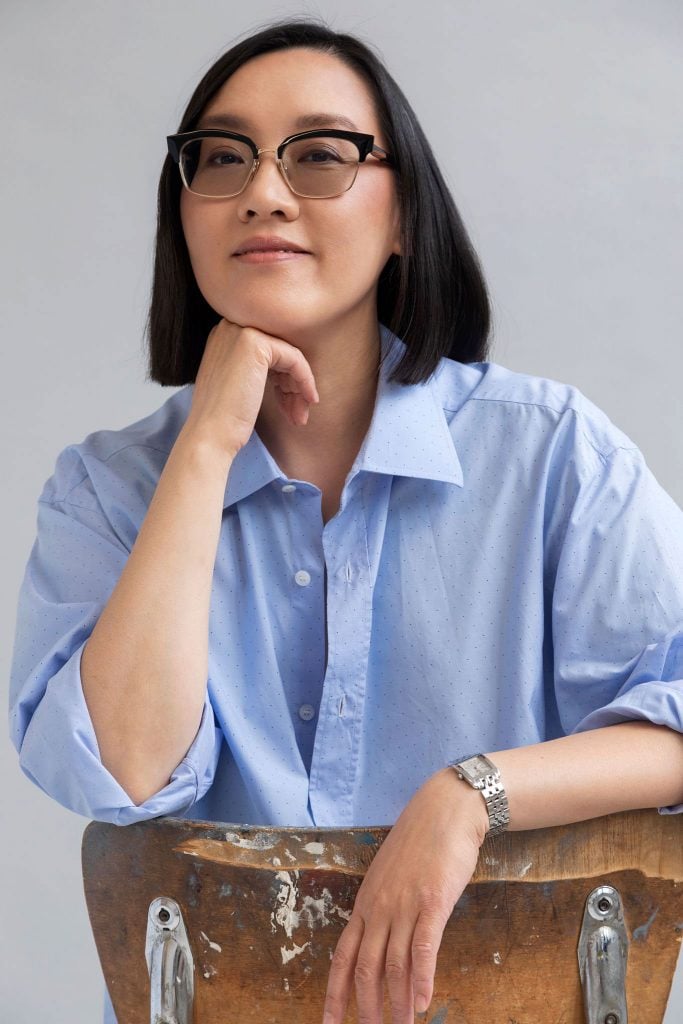
In early 2021, Christine Kuan took the helm of Creative Capital, the prestigious art fund that has awarded millions of dollars in direct grants to groundbreaking artists like Jeffrey Gibson, Simone Leigh, Theaster Gates, Laura Poitras, and many others since its founding in 1999—in total, $55 million to nearly 1,000 artists. The New York-based philanthropy also supports artists in a myriad of non-financial ways, including high-level career development to help them amplify their voices and build sustainable practices. As Kuan said to Artnet, “[We] offer lifelong scaffolding for the artist.”
Relishing the opportunity to work closely with creative communities, Kuan has been a transformative leader in her three short years at Creative Capital. Among other efforts, she’s helped expand the recipients of the group’s annual $50,000 grants from 35 to 50, introduced a free networking and educational program for all professional artists to utilize, and experimented with new ways of bringing artists together offline.
As the next grant cycle nears, we caught up with Kuan about Creative Capital’s 20-year commitment to the arts, its goals for 2024, and the best perk of her job—hanging out with artists.
For anyone who might be unfamiliar, how would you characterize Creative Capital’s mission?
Daring, timely, and important.
Since beginning as President and Executive Director nearly three years ago, what has been your guiding philosophy?
I always go back to our roots. We were founded to defend freedom of expression after the NEA discontinued grants to artists. My goal is to have Creative Capital uplift as many diverse ideas, radical projects, and underserved artists as possible. I think of Creative Capital as a kind of safety net or Red Cross for artists. Filmmaker Cristina Ibarra (2005 Creative Capital Awardee, 2021 MacArthur Fellow) said we do the “sweaty, invisible, behind-the-scenes work”—I think she’s spot on.
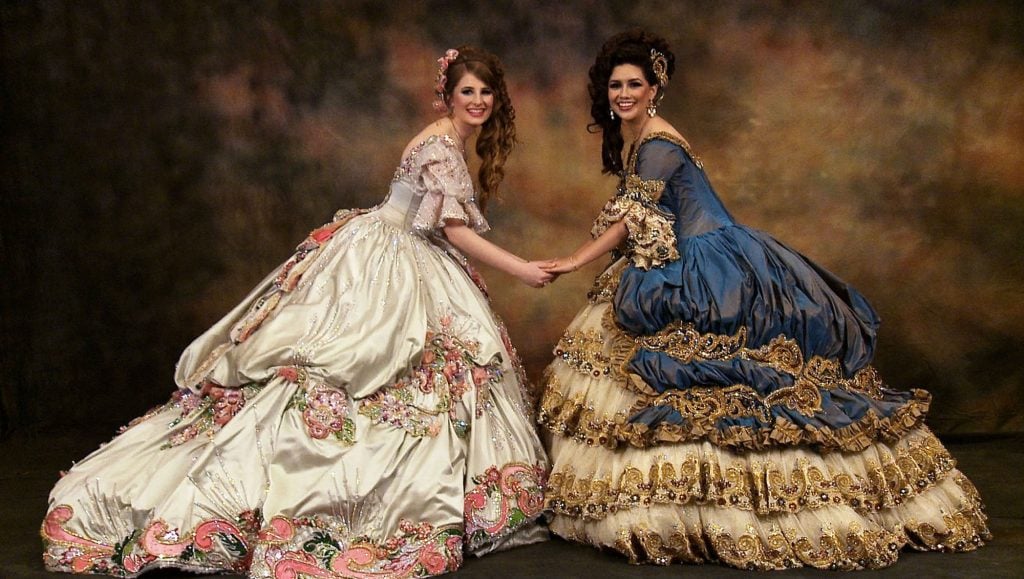
Cristina Ibarra (2005 Creative Capital Awardee in Film), film still from Las Marthas, a feature-length documentary revealing the Tex-Mex coming-of-age ritual of Society daughters at the annual debutante ball in Laredo, Texas.
How has your extensive background in the arts, especially as CEO of Sotheby’s Institute of Art, helped prepare you for the role?
I think that role taught me a lot about how to satisfy goals under pressure, which means, ultimately, leading with integrity, creativity, and agility. You have to find a way to move forward on the mission while delivering qualitative and quantitative results. But I also think having studied at the Iowa Writers’ Workshop and lived the life of a poet, I understand that artists must have time, space, and money to create new work. I’ve been fortunate that our board and supporters have championed my ideas to expand our grants from 35 to 50 awards of $50,000 per year, to pilot a new, free Creative Capital Curriculum for professional artists, and to experiment with new formats for artist gatherings across the country following the pandemic.
Creative Capital has awarded over $55 million grants and services since 1999, $2.25 million of that in 2023 alone. What do those stellar numbers look like on the ground, from the perspective of a young or mid-career artist?
A $50,000 grant is a substantial award for most artists working today, and more importantly, it’s about both the artist and the project being seen, recognized, and supported. So many awardees have told me this was a life-changing grant because the high visibility of the award enabled them to garner partners, cultural producers, presenting venues, and additional financial support. They also tell me that the professional services and community-building we provide have transformed their artistic practices. Creative Capital offers lifelong scaffolding for the artist.

Brian House (2023 Creative Capital Awardee in Technology), Macrophones, recordings of infrasounds of climate change. Photo: Brian House.
In 2023, Creative Capital supported 163 artists across the U.S. How would you define the impact that has had on those artist’s lives and careers?
Post-pandemic, I think Creative Capital has been profound for these artists because for many of them we are their only major source of project support. My board, staff, and I discussed our role in the arts ecosystem as soon as I joined and we felt the need to increase the grants and services for individual artists.
Creative Capital supports a wide range of disciplines, including the visual arts, performing arts, film, literature, technology, and socially engaged art. Is there an area where you’ve seen particular growth recently?
We received 5,600 applications this year for 50 grants and the urgent need for project funding is clear. We have seen an increase in performing arts projects, socially engaged projects, and visual arts projects. We’ve also done a lot of outreach to underserved communities across the U.S., and especially Indigenous communities. We saw a 300% increase in applications from Indigenous artists this past cycle.
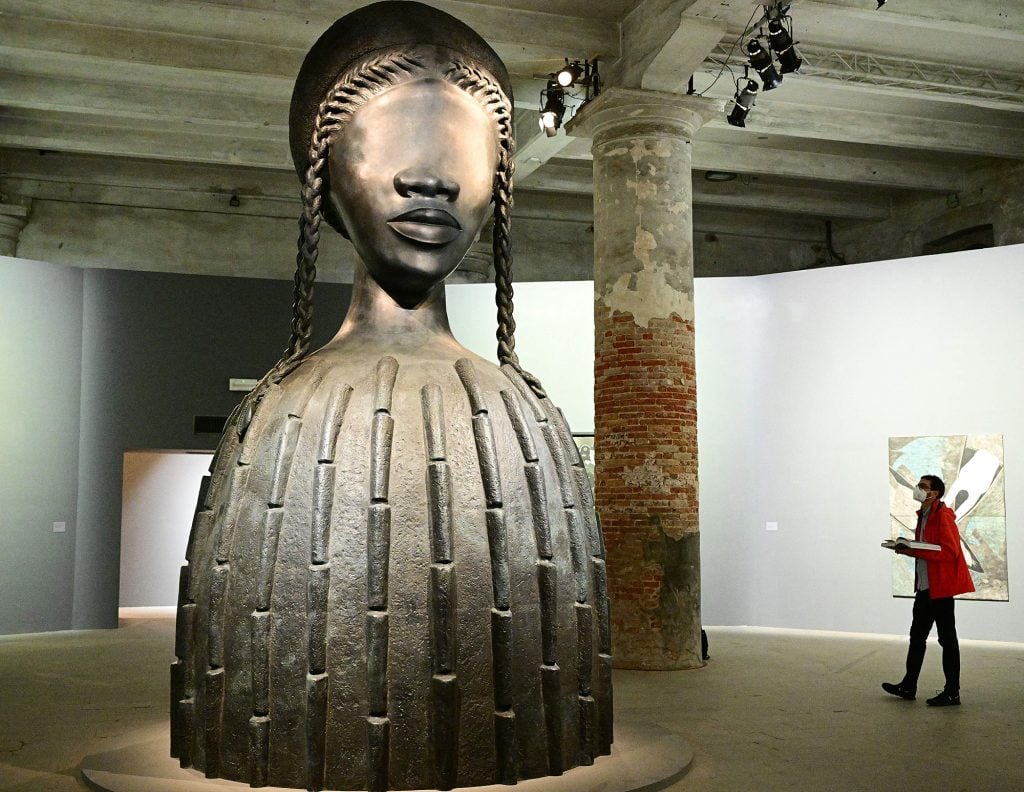
Bronze sculpture by Simone Leigh (2012 Creative Capital Awardee in Visual Arts) at the 2022 Venice Biennale.(Photo by VINCENZO PINTO/AFP via Getty Images)
Can you give us a snapshot of what the selection process looks like?
Creative Capital invites external reviewers from all over the country each year to review the applications over several rounds. The process is expensive and labor-intensive, but we want to give every individual artist the opportunity to have their project proposal seen by experts around the country. Democracy is a process. We believe this is critical to our being able to support artists at catalytic moments in their careers, such as Simone Leigh (2012 Creative Capital Awardee), who we awarded a decade before she was the first Black woman to represent the U.S. at the Venice Biennale, and Jeffrey Gibson (2005 Creative Capital Awardee), who we awarded nearly 20 years before he will be the first Indigenous solo artist to represent the U.S. at the Venice Biennale next year.
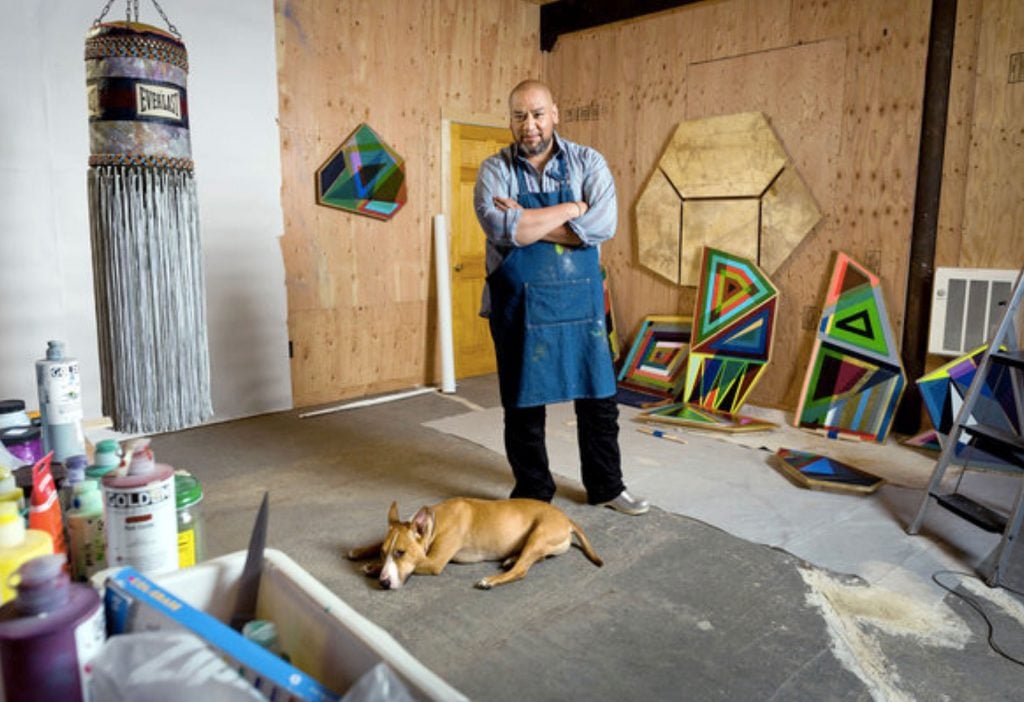
Jeffrey Gibson (2005 Creative Capital Awardee in Visual Arts), who will be the first Indigenous artist to represent the U.S. at next year’s Venice Biennale.
In addition to direct funding to artists, Creative Capital offers a tremendous amount of career development. In your estimation, how valuable is this to artists? I suspect it is on a par with the financial aspect.
Yes, the career support is extensive and multi-faceted. Our suite of services includes access to thousands of experts in financial planning, accounting, taxes, law, communications, marketing, strategic planning, as well as thousands of curators, cultural producers, industry experts, and peer mentors. It’s a rolodex that’s been built up over 24 years of serving the field—artists find that level of bespoke support to be invaluable. We also serve the artist community at-large with our new free Curriculum and our Artist Opportunities listings—more than 250,000 artists each year utilize our free resources.
Looking back at your time with Creative Capital, what is one funded project that really stands out to you?
I’ve awarded 150 projects in the time I’ve been in this role, so I would say every project we’ve supported felt urgent, important, and innovative. I think one very important project was by the 2022 Awardee Viva Ruiz. I think Viva is doing incredible, risk-taking work, and it’s a powerful way to mobilize people on an issue that is, at its heart, about gender equity and human rights. Viva is collaborating with Judy Chicago at the New Museum for “Herstory”—we are so happy that they’re gaining such visibility and recognition.
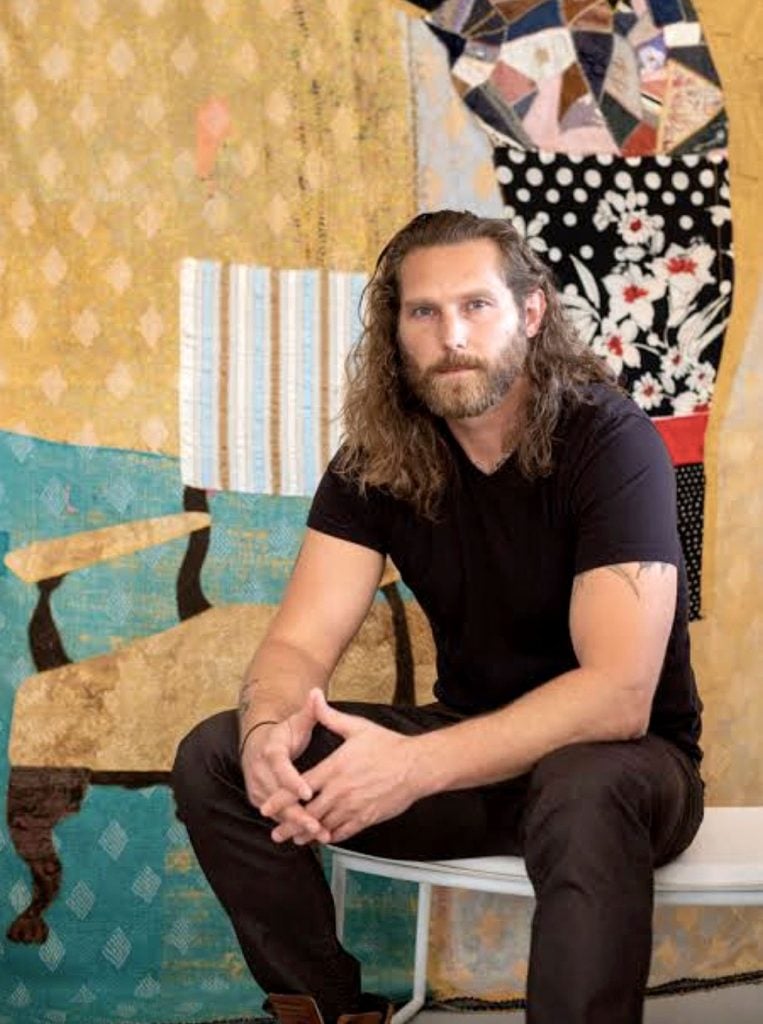
Jesse Krimes (2020 Creative Capital Awardee) with a work from his “Mass Incarceration Quilt Series.”
What kind of presence do you have in artists’ lives and practices during and after a grant? In other words, do you keep in touch with them?
In the past few weeks, I saw Michelle Ellsworth (2013 Creative Capital Awardee) at the Chocolate Factory, then was in Atlanta and met up with Shontina Vernon (2019 Creative Capital Awardee). Came back to New York City and saw Branden Jacobs-Jenkins’s (2016 Creative Capital Awardee) Appropriate on Broadway with some of our Creative Capital supporters and it was an absolutely riveting performance by Sarah Paulson, Elle Fanning, and the cast. Go see it, it’s mind-blowing! Branden joined us afterwards for drinks and we closed down the bar—it was a truly unforgettable night. Then, I flew to Miami and we got a sneak peek of Pioneer Winter’s (2022 Creative Capital Awardee) dance rehearsals for their Creative Capital project DJ Apollo, sat on a panel at the Miami Regional Library with Xavier Cortada (2022 Creative Capital Grantee) for his community-based Creative Capital project The Underwater, and then we all had cocktails with Jesse Krimes (2021 Creative Capital Awardee), Etienne Charles (2022 Creative Capital Awardee), LizNBow (2023 Creative Capital Awardee), Janine Antoni (2012 Creative Capital Awardee), and Cézanne Charles (2023 Creative Capital Awardee). Last night, I went to a dinner at a private home and Sherrill Roland (2021 Creative Capital Awardee) joined us. Artists are always popping into our offices, and we always try to see their new work and their works-in-progress. So yes, I try to keep in touch!
On a personal level, how do you engage with the art world and how are your interests reflected in your work at Creative Capital?
I’m interested in everything every Creative Capital artist is doing, and I’m also interested in how these artists connect to the larger international, global art scene. Once you discover the projects Creative Capital artists are working on, so many other parts of the art world can feel a bit conventional. I’m interested in the art that makes you feel like you’re in for a wild ride.
What impacts have you seen on the culture at large as a result of Creative Capital’s support, that have moved the needle in a broad sense?
Our artists and their projects have redefined so many art forms and continue to shape every aspect of film, TV, museums, galleries, art fairs, theater, dance, literature, technology, social justice movements, and international biennials and triennials—Lorraine O’Grady, Ry Russo-Young, Raven Chacon, Kristina Wong, Laura Poitras, Yance Ford, Titus Kaphar, Pope.L, Kassa Overall, Sidra Bell and Immanuel Wilkins, Brian House, Jordan Weber, and so many others.
Finally, as Creative Capital celebrates its 25th anniversary in 2024, can you speak a little about its past and future goals for the arts.
As a fundraising organization, our biggest goal as we reach 1,000 grantees, is to be able to expand our grants and services to give every artist in this country a viable chance of accessing and benefitting from the grants and services they need to build thriving artistic practices in their local communities. It’s a simple dream and it can become a reality with major philanthropy.





